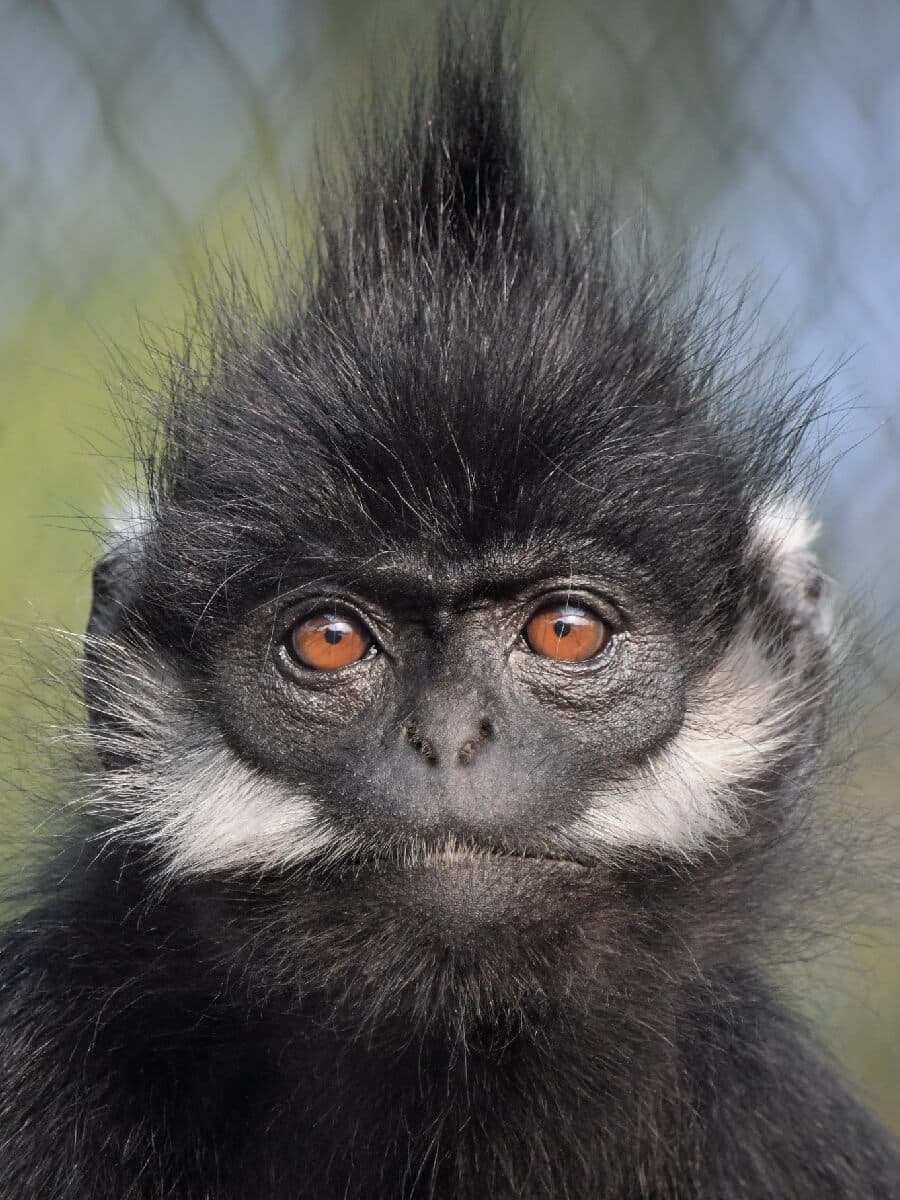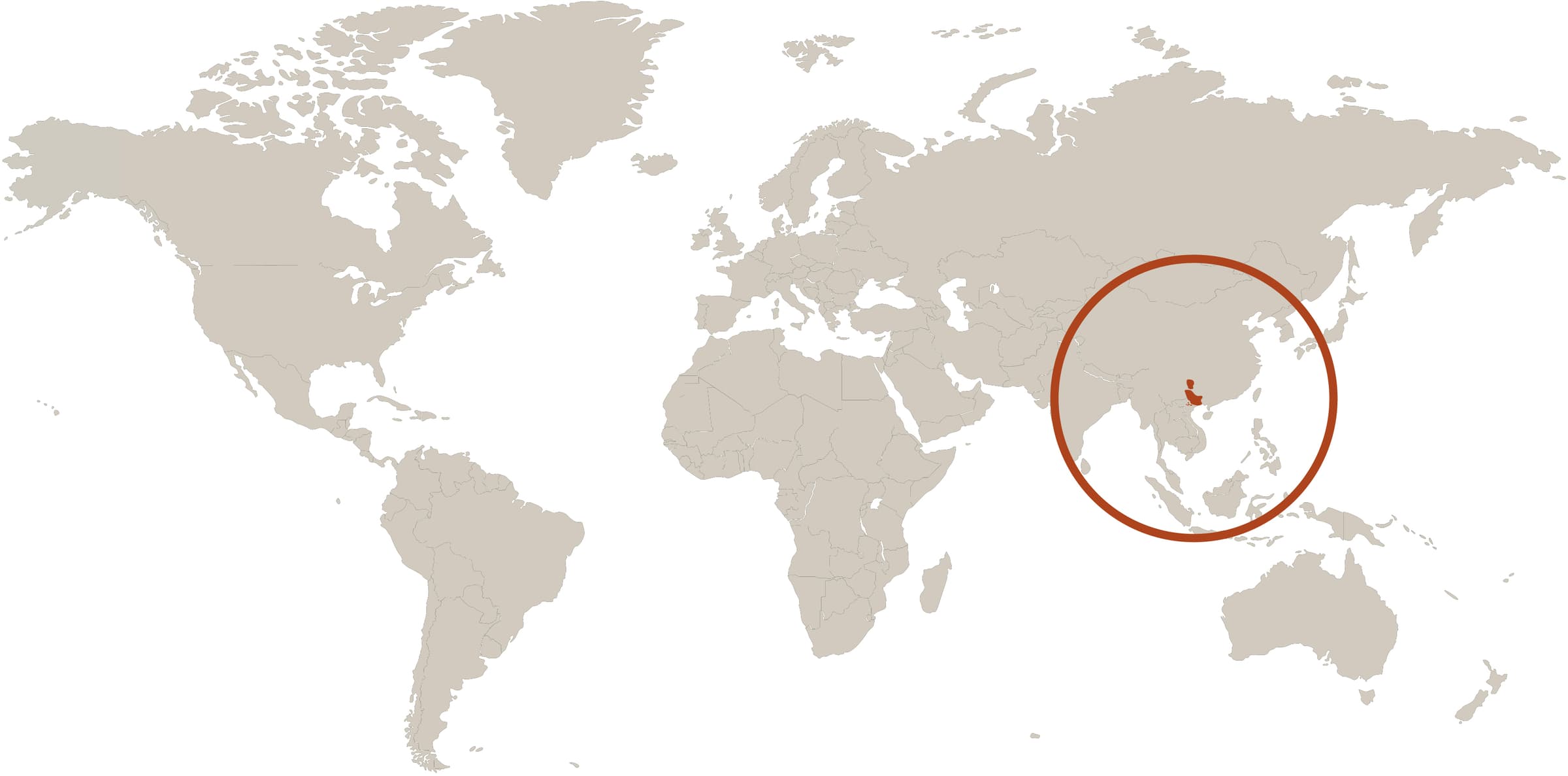
Francois' Langur
Trachypithecus francoisi
Did you know?
- Francois' langurs are a part of the Cercopithecidae family, which they share with other African-Eurasian monkeys.
- They live in tropical forests with limestone outcroppings in Southeast Asia.
- They live in family groups with one male and multiple females.
- Babies are born orange, but adults have black fur.
- A female will give birth to one young.
Adaptations
Francois’ langurs are slender monkeys, and their streamlined shape is perfect for their mainly-arboreal lifestyle. They are mostly folivorous, with a diet including a lot of leaves and shoots, so they spend part of their day resting while their multi-chambered stomachs break down their leafy diet. Langurs, like other African and Asian monkeys, have thick skin pads on their backsides to help them sit comfortably on branches without falling.
Young and Family
Francois’ langurs are social animals that usually live in family groups with about 12 individuals and only one adult male. The male will spend his time watching for predators, keeping the group together and patrolling their forest homes. Mothers will give birth to one monkey after a gestation period of about six to seven months.
Francois’ langurs are born with bright orange hair. Adult female members of the group will assist in caring for and carrying the young, known as ‘allomothering’, and the baby’s stand-out color helps the adults in the group keep track of the newborn. After about six months, they have fully transitioned to their less-conspicuous adult coloring, which is mostly black.
Threat Level
- Unknown
- Common
- Near Threatened
- Threatened
- Endangered
- Critically Endangered
- Extinct in the Wild
Endangered
The Francois' Langur faces a very high risk of extinction in the wild.
Range
Southeast Asia
Habitat
Tropical forest

We care about Francois’ langurs
It is thought that over 50% of all Francois’ langurs in the wild have disappeared within the past few decades. Hunting by people and habitat destruction are the main threats to this species.
The Saint Louis Zoo participates in the Association of Zoos and Aquariums' Species Survival Program for Francois’ langurs. We support a family group in the Primate House and Primate Canopy Trails at the Zoo. Learn more about our conservation efforts.
Find this animal in Historic Hill

SAINT LOUIS ZOO ZONE
Historic Hill
Historic Hill is a lovely stroll through one of the oldest parts of the Saint Louis Zoo. From the 1904 World’s Fair Flight Cage to the Spanish architectural flavor of the 1920s in the Bird House, Primate House and Herpetarium to the finishing touches of our thoroughly modern exhibits, this area of the Zoo has a unique ambiance and a nostalgic history that make it a great destination.

